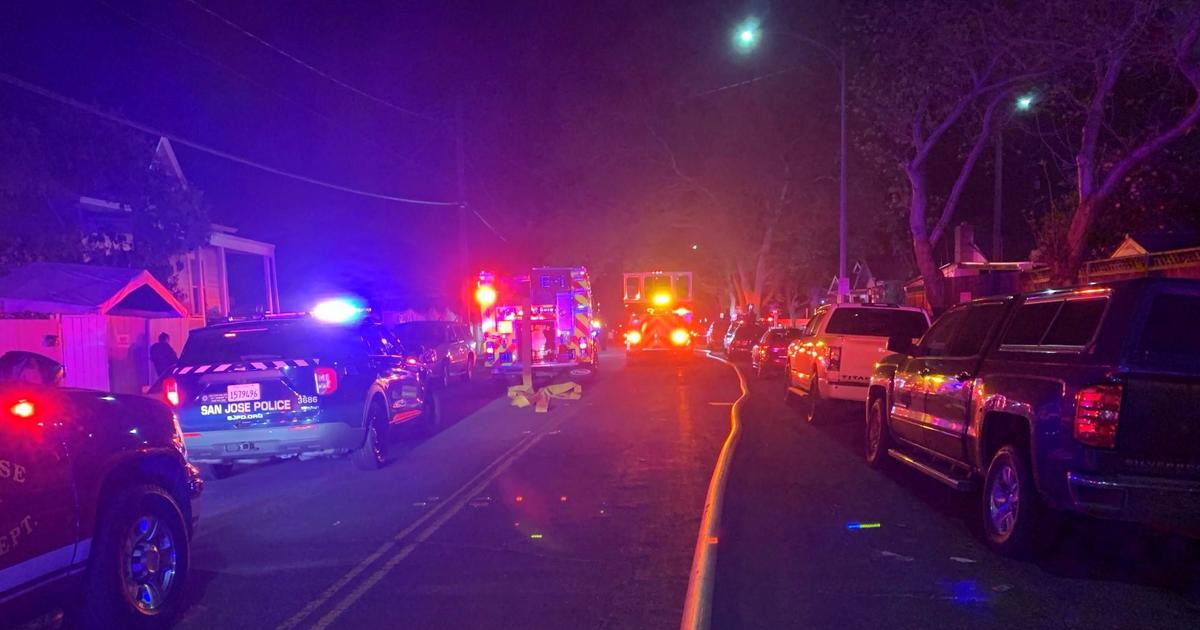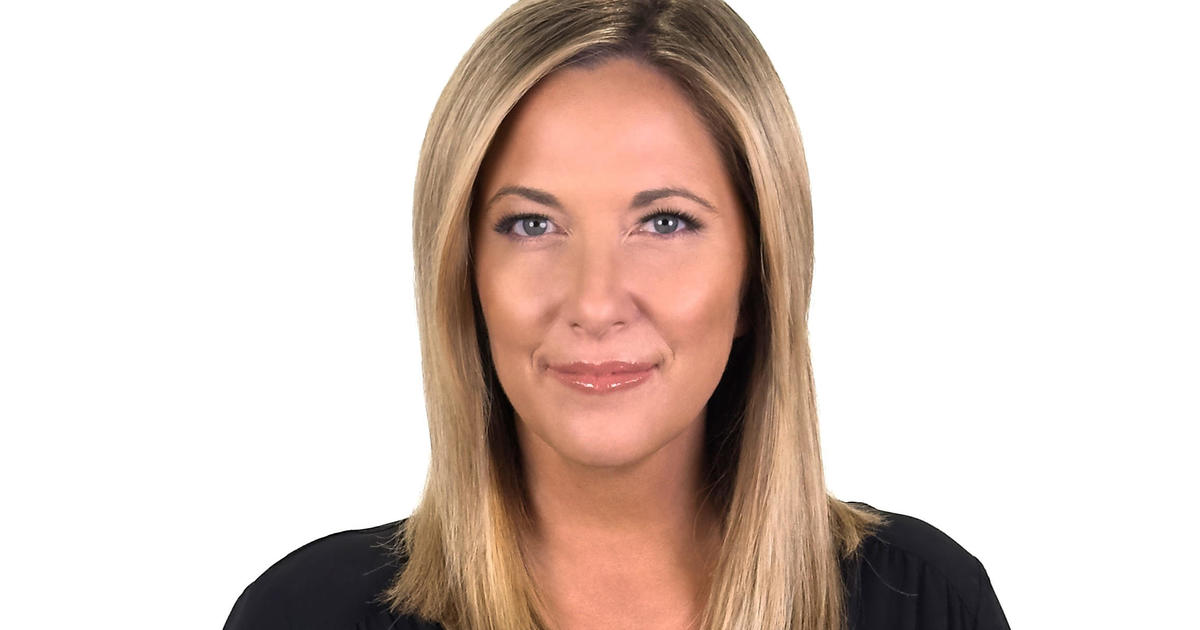COVID Surge: California Regional Stay-At-Home Orders To Remain, Appear To Be Leveling Infection Rate
SACRAMENTO (CBS SF) -- The surging coronavirus pandemic is expected to result in the extension of regional stay-at-home orders across California beginning Tuesday, with the Bay Area's orders to be reassessed on January 8th at the earliest, Governor Gavin Newsom announced Monday.
The governor and the state's top health official also said the orders appear to be having an effect, with the case rate beginning to level off in most of the state.
During his weekly COVID Monday, Newsom acknowledged the certainty of extended stay-at-home orders for Southern California and the San Joaquin Valley, the two regions in the state currently reporting 0% of ICU capacity. While the initial three-week stay-at-home order issued for both regions was set to expire Monday, Newsom said that current conditions would lead those orders to be extended for a period not yet specified.
"It is clear and it is understandable that it is likely that those stay-at-home orders will be extended," he said.
A region needs to show projected a minimum of 15% ICU capacity over four weeks for a regional order to be lifted. Newsom said the projected ICU data from SoCal and San Joaquin Valley was being finalized for an expected announcement Tuesday extending the orders in those regions.
The regional orders have forced the closure of indoor services such as hair and nail salons, bars, movie theaters and amusement parks, and restricts restaurants to takeout only.
"We see the Greater Sacramento area and the Bay Area. those stay-at-home orders are set to expire on January 1st in Sacramento -- and we'll update you after the beginning of the new year where the Greater Sacramento area and region are based on their four-week projections -- and the Bay Area a week later on January 8," Newsom explained. "We'll update you on those four-week projections moving forward around that date as well."
COVID Testing: Find a testing site near you
In San Jose on Monday, there were long lines stretching down the street from the testing site at Emannuel Baptist Church. Many people waiting in line said they had either recently been exposed to the virus or wanted to get tested following a holiday gathering.
Steffen Yates recently developed a cough and told KPIX 5 that he wanted to make sure he wasn't infected. "Just being aware of what's going on with myself and body is the most important thing. So, that I'm able to protect myself and other people because it's not just about me," Yates said.
As of Monday, the Bay Area's ICU capacity was at 9.5%, while the Greater Sacramento region was at 16.6%. The far Northern California region close to the Oregon border was showing 29.3% ICU capacity.
The state reported a testing positivity rate of 12.5%, with 33,170 new infections on Sunday, slightly lower than the seven-day average of 37,661. But Newsom provided more example of the surge's effect on the health care system, with a 38% increase in hospitalizations and a 37% increase in ICU admissions over the past two weeks.
The governor lamented how the virus is disproportionately sending those over 60 to the ICU and to a fatal outcome.
"Since October 1st, 65% of the ICU admissions have been the cohort of people 61 or older, but 80% of the deaths, in that age cohort," said Newsom. "Sixty is not that old, 61 is not that old."
There were 64 deaths reported on Sunday, with a 7-day average of 230. California has seen a total of 24,284 deaths from the virus, among 2,155,976 total cases.
The majority of the state hospitalizations are plateauing with the exception of Southern California, where hospitalizations are still rising, Newsom said. Health and Human Services Secretary D. Mark Ghaly said the leveling off is providing evidence that the state's stay-at-home orders and other interventions are making a difference.
"Absolutely, we have seen this plateau. It's what we'd hope for. We weren't sure that we were going to see it because of some of the concerns around the movement, mobility data, our sense of where this was being effective and where it wasn't," said Ghaly. "Frankly, we are pleased to see a little bit of a plateau."
The situation is much more desperate in Southern California, with Los Angeles county reporting 12-15,000 new cases a day. On Saturday, county hospitals reported 96% ambulance diversion, compared to 33% before the surge.
"Routine emergency care is being slowed down. So, if you think this doesn't impact you, if you think somehow you're immune from impact of COVID, there's the direct impact that is the transmission of this virus," Newsom said. "There is the indirect impact, God forbid, you have a stroke or a heart attack, you have a car accident or you have other acute care needs. The impacts of this virus, this pandemic, is being felt on the entire hospital system, and that impact obviously could impact each and every one of us."
Newsom said the state has sent a team of staffers to Southern California to help target needs within hospitals, such as load leveling among nearby hospitals, contingency care and procurement of PPE. There are currently some 1,000 state employees assisting in 116 facilities statewide, as well as 200 U.S. Defense Department staffers who have been or set to be deployed to help out with the surge.
Also Monday, Newsom announced a partnership with CVS and Walgreens to provide the COVID vaccine to residents and staffers of skilled nursing facilities and other assisted living facilities. The partnership, which is already happening in other parts of the country, would use CVS and Walgreens staffers in all aspects of the vaccine distribution, and free up hospital and state employees from administering the vaccine rollout.
There will be 1.76 million COVID vaccine doses delivered to California by the end of the week from both Pfizer and Moderna. On Wednesday, the state's Community Vaccine Advisory Committee planned to meet to finalize Phase 1B plans for giving the vaccine to workers in education, childcare, and food and agriculture essential workers (Tier One) and those 65 and older with underlying conditions, homeless, incarcerated, transportation and other critical sectors (Tier Two) after frontline medical workers receive their doses in three tiers.
Discussions for the third phase of recipients - people age 16-64 with underlying conditions and workers in other sectors - will also be held on Wednesday.
Newsom reiterated his previous warning to anyone who would attempt to skip their place in line for the vaccine ahead of their time.
"I just want to make this crystal clear, if you skip the line, or you intend to skip the line, you will be sanctioned. You will lose your license. You will not only lose your license, we will be very aggressive in terms of highlighting the reputational impacts as well."



